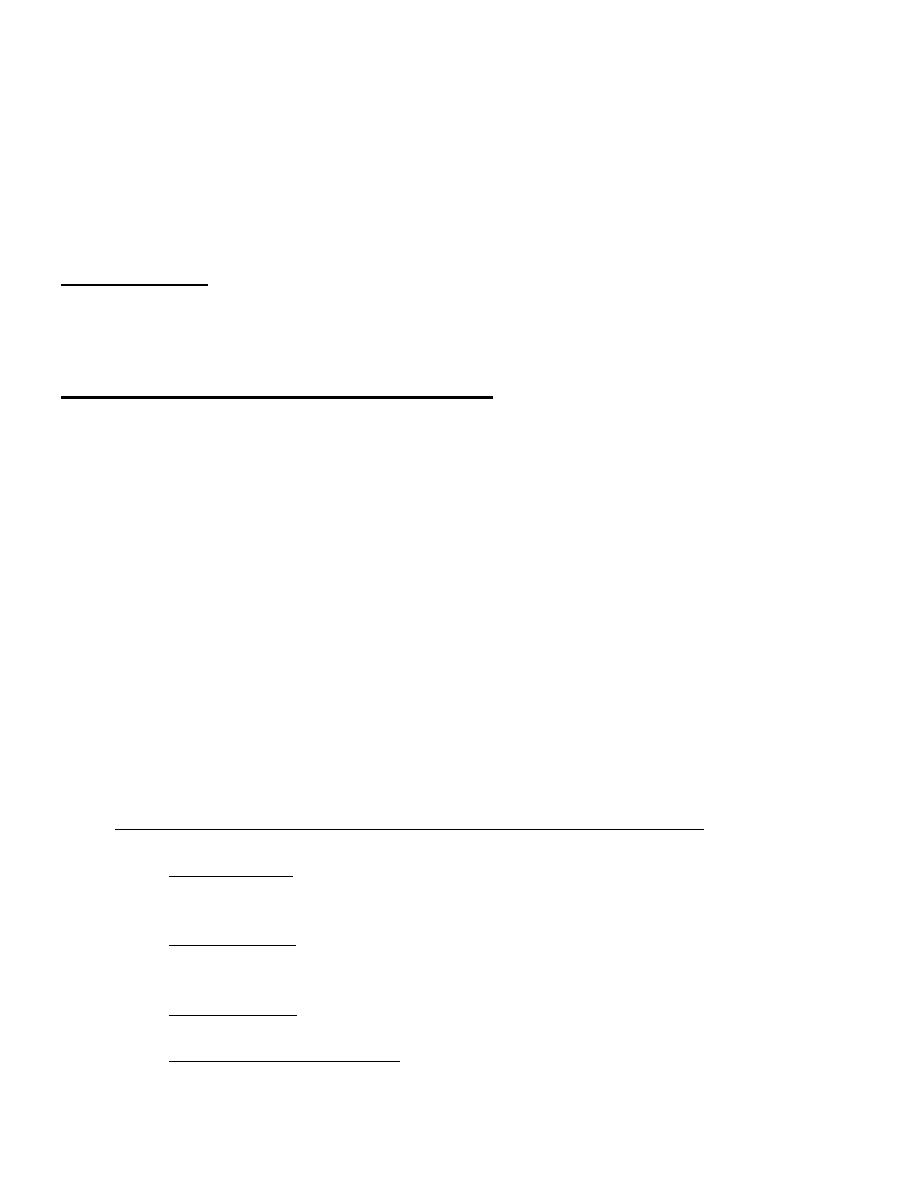
د.فرح سمير يحيى
10-10-2019
Lec2 pediatrics
Normal Development
Development :
is an increase in function of processes related to body and mind
Development follows an orderly progress in a cephalic to caudal direction & also requires the loss of
primitive reflexes.
There are 4 fields for developmental assessment:
Gross motor: development of locomotion
Vision & fine manipulation (fine motor): development of hand-eye coordination
Hearing & speech: development of language
Personal & social: integration of acquired abilities to reflect general understanding of the environment.
Newborn Period
Primitive neonatal reflexes are specific in the newborn period, a consequence of the continued
development of the CNS after birth.
Any asymmetry, increase, or decrease in tone elicited by passive movement may indicate a significant
CNS abnormality and requires further evaluation.
Numerous primitive reflexes, present at birth, assess the functional integrity of the brainstem and basal
ganglia .
They are symmetric and disappear at 4 to 6 months of age, indicating the normal maturation of
descending inhibitory cerebral influences (Moro reflex).
The grasp and rooting reflexes are inhibited by maturation of frontal lobe structures and may reappear
later in life with frontal lobe lesions.
The most important reflexes to assess during the newborn period are as follows:
The Moro reflex
is elicited by allowing the infant's head gently to move back suddenly (from a
few inches off the crib mattress). This results in abduction and upward movement of the arms
followed by adduction and flexion. The Moro reflex disappears by 4 to 6 months.
The rooting reflex is elicited by touching the corner of the infant's mouth, resulting in the
lowering of the lower lip on the same side with tongue movement toward the stimulus. The face
may turn to the stimulus. The rooting reflex disappears at 4 to 6 months.
The sucking reflex occurs with almost any object placed in the newborn's mouth. The infant
responds with vigorous sucking.
The asymmetric tonic neck reflex is elicited by placing the infant supine and turning the head to
the side. This placement results in ipsilateral extension of the arm and the leg into a "fencing"
position. The contralateral side flexes as well. This reflex disappears by 2 to 3 months of age.
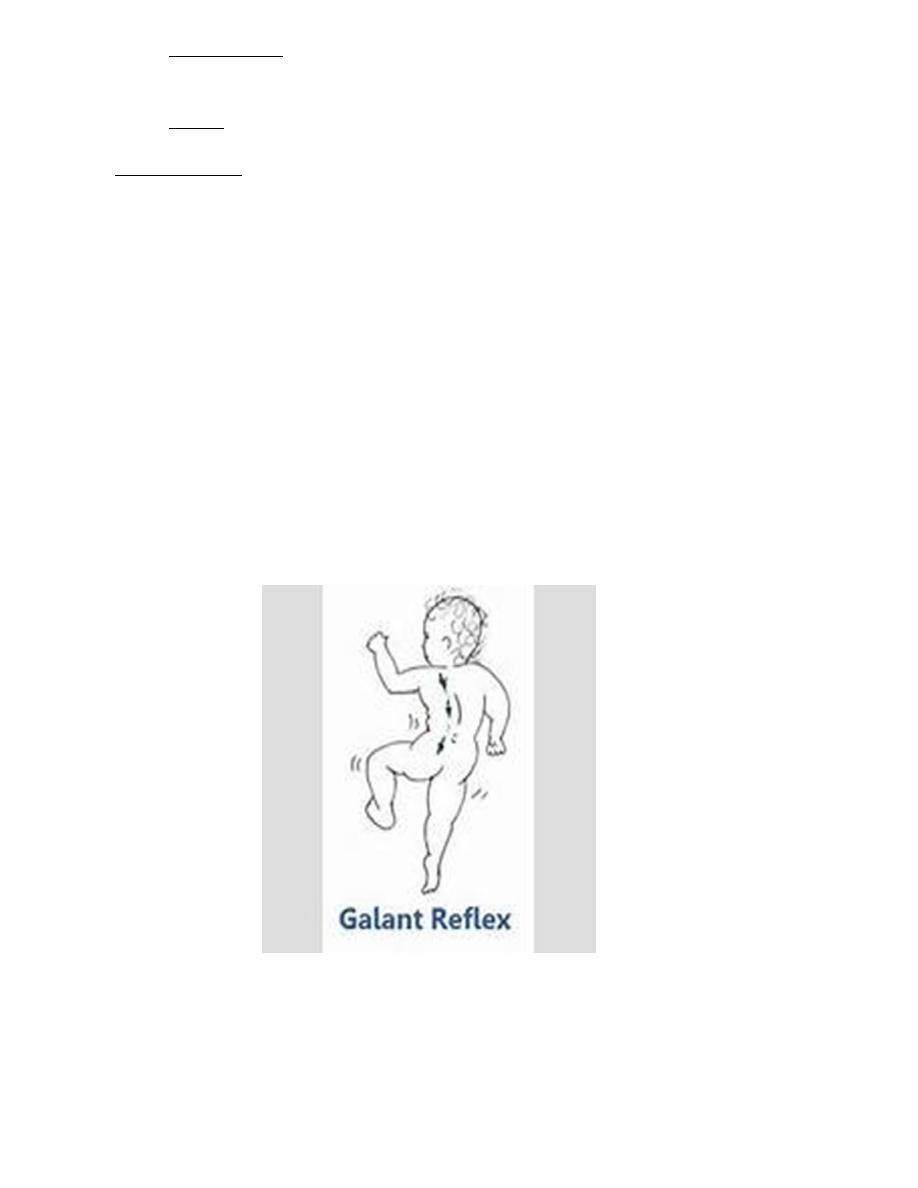
The grasp reflex occurs when placing an object, such as a finger, onto the infant's palm (palmar
grasp) or sole (plantar grasp). The infant responds by flexing fingers or curling the toes. The
palmar grasp usually disappears by 3 to 4 months and the plantar grasp by 6 to 8 months.
Placing
Infant places foot on examining surface when dorsum of foot i s brought into contact
with the edge of the surface appear at birth and disappears at 4-6months.
Walking/stepping Hold infant in standing position and place foot on a flat surface. The leg extends to
take the infant’s weight (supporting reaction), the opposite leg flexes then extends, and as it takes
weight the original leg flexes.
Trunk incurvation reflex (galent) :Stroking the skin along the edge of the vertebrae produces
curvature of the spine with the apex opposite to the direction of the stroke .
Parachute response. As the examiner allows the child to free fall in ventral suspension, the
child's extremities extend symmetrically to distribute his weight over a broader and more stable
base on landing. Appear at 6month and never disappear.
Protective equilibrium response. As the child is pushed laterally by the examiner, he flexes his
trunk toward the force to regain his center of gravity while one arm extends to protect against
falling (lateral propping).usually emerge by 6months of age and never disappear.
The parachute reflex become apparent after the newborn period, indicating
proper maturation of appropriate brain structures. Asymmetry or persistence of
the primitive reflexes may indicate focal brain or peripheral nerve lesions
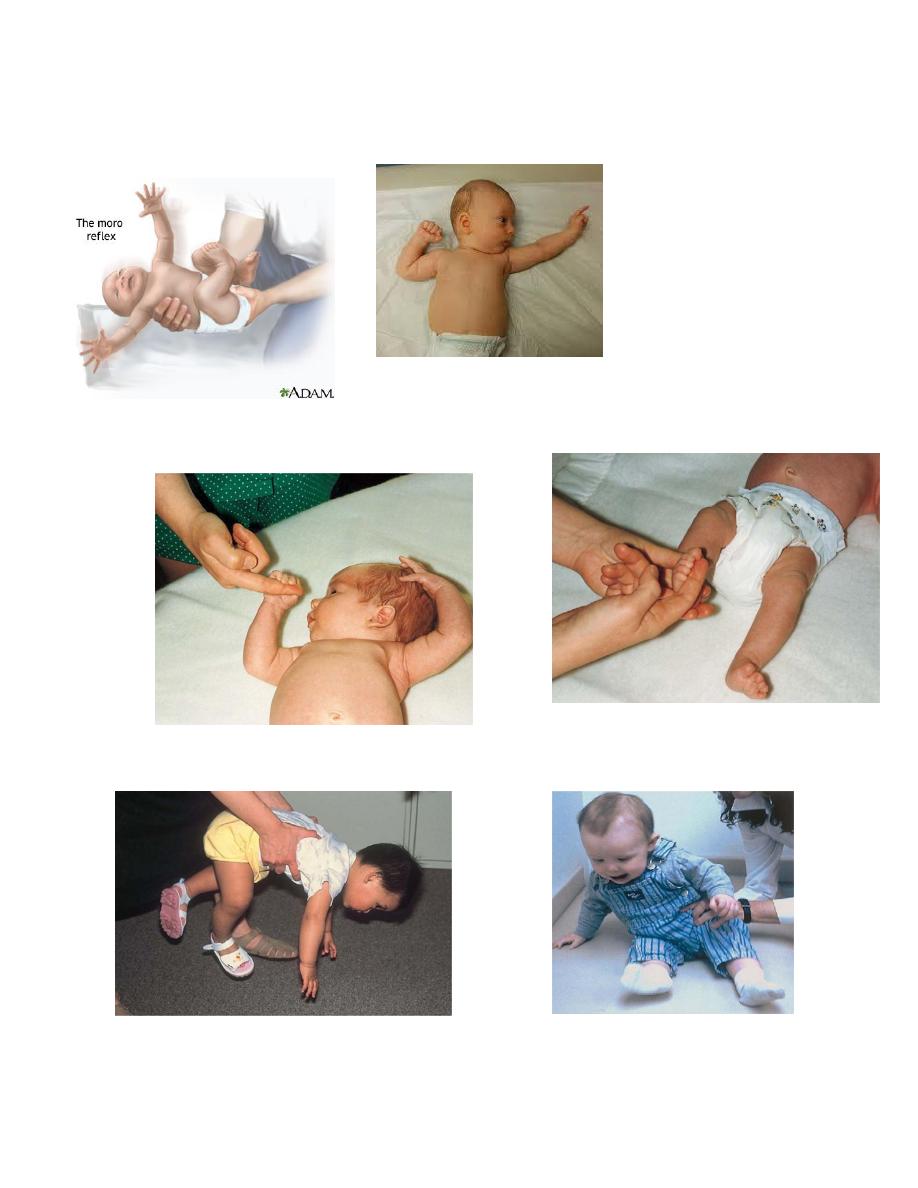
Asymmetrical tonic neck reflex
Palmar grasp reflex plantar grasp reflex
Parachute reflex Protective equilibrium
response
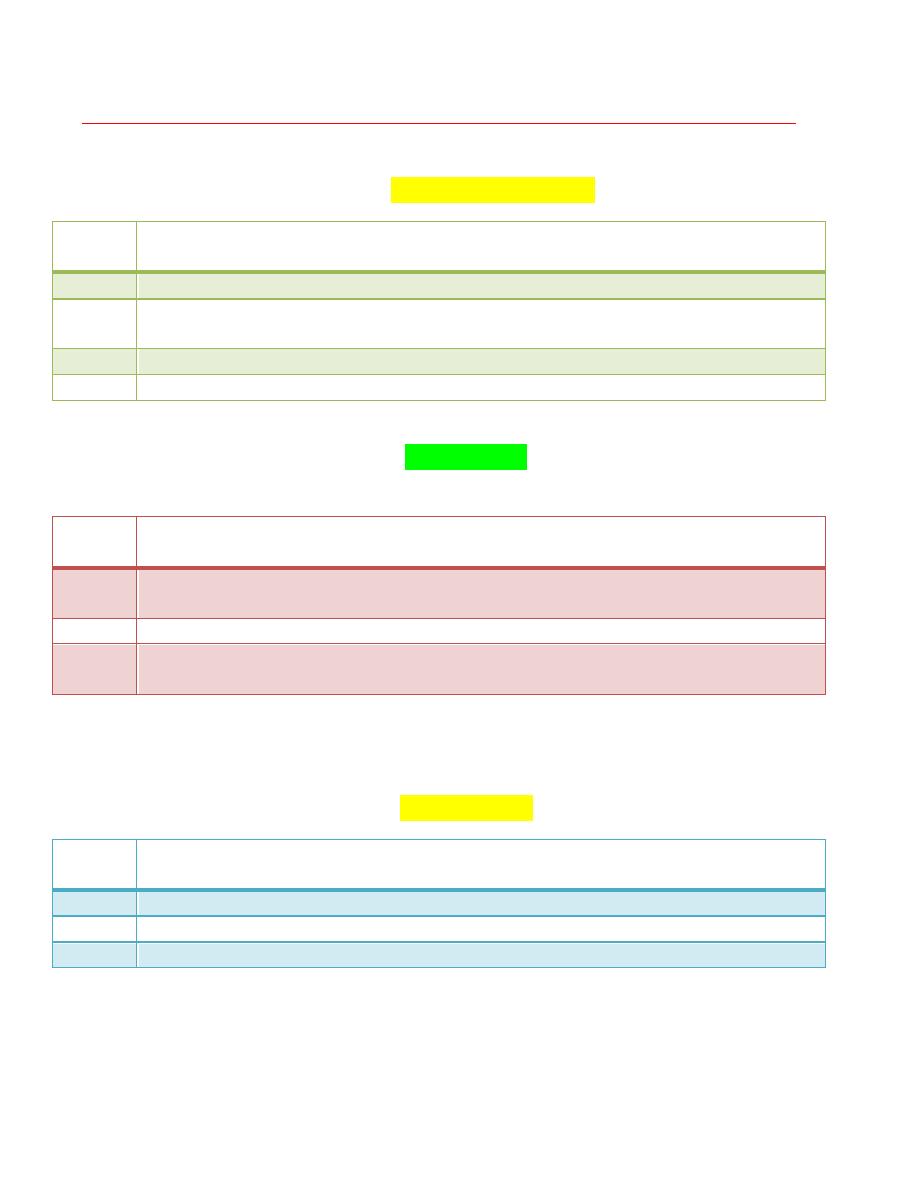
Emerging Patterns of Behavior During the 1st Year of Life:
Neonate (1st 4 wk)
Prone:
Lies in flexed attitude; turns head from side to side; head sags on ventral
suspension
Supine: Generally flexed and a little stiff
Visual: May fixate face on light in line of vision; “doll's-eye” movement of eyes on
turning of the body
Reflex: Moro response active; stepping and placing reflexes; grasp reflex active
Social: Visual preference for human face
At 1 month
Prone:
Legs more extended; holds chin up; turns head; head lifted momentarily
to plane of body on ventral suspension
Supine: Tonic neck posture predominates; supple and relaxed; head lags when pulled to
sitting position
Visual: Watches person; follows moving object
Social: Body movements in cadence with voice of other in social contact; beginning to
smile
At 2 months
Prone:
Raises head slightly farther; head sustained in plane of body on ventral
suspension
Supine: Tonic neck posture predominates; head lags when pulled to sitting position
Visual: Follows moving object 180 degrees
Social: Smiles on social contact; listens to voice and coos
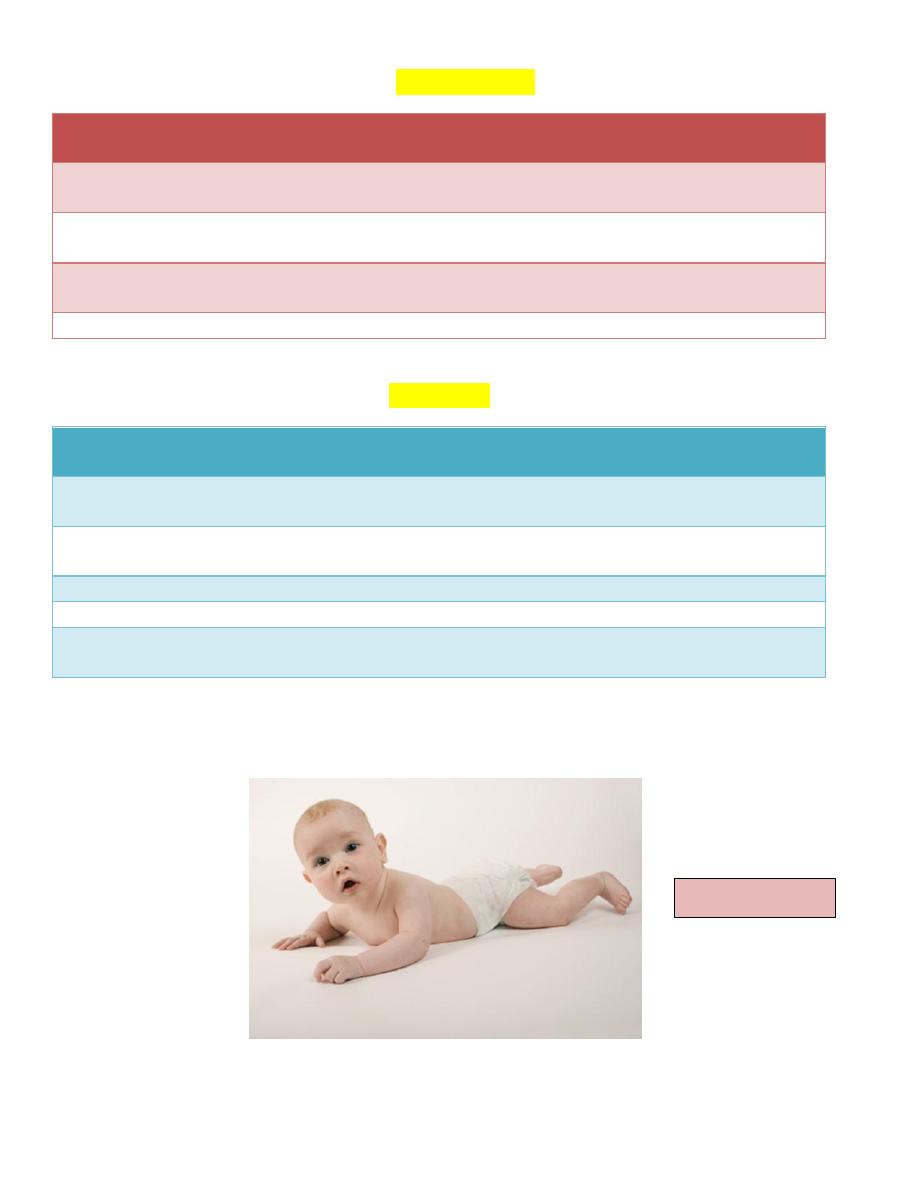
At 3 months
Prone:
Lifts head and chest with arms extended; head above plane of body on
ventral suspension
Supine: Tonic neck posture predominates; reaches toward and misses objects; waves at
toy
Sitting: Head lag partially compensated when pulled to sitting position; early head
control with bobbing motion; back rounded
Reflex: Typical Moro response has not persisted; makes defensive movements or
selective withdrawal reactions
Social: Sustained social contact; listens to music; says “aah, ngah
4 months
Prone:
Lifts head and chest, with head in approximately vertical axis; legs
extended
Supine:
Symmetric posture predominates, hands in midline; reaches and grasps
objects and brings them to mouth
Sitting:
No head lag when pulled to sitting position; head steady, tipped forward;
enjoys sitting with full truncal support
Standing: When held erect, pushes with feet
Adaptive: Sees pellet, but makes no move to reach for it
Social:
Laughs out loud; may show displeasure if social contact is broken; excited at
sight of food
4 months infant
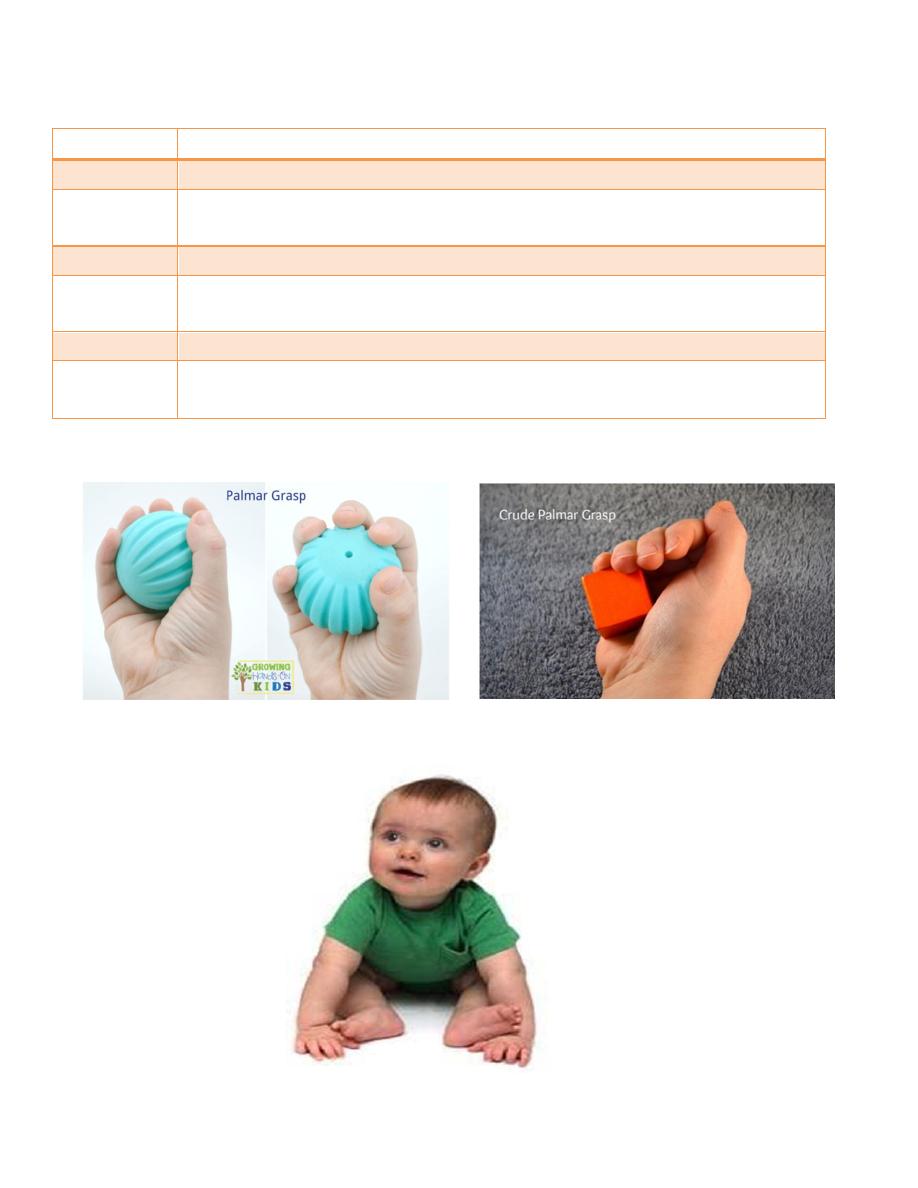
At 7 months
Prone:
Rolls over; pivots; crawls or creep-crawls
Supine:
Lifts head; rolls over; squirms
Sitting:
Sits briefly, with support of pelvis; leans forward on hands; back
rounded
Standing:
May support most of weight; bounces actively
Adaptive: Reaches out for and grasps large object; transfers objects from
hand to hand; grasp uses radial palm; rakes at pellet
Language: Forms polysyllabic vowel sounds
Social:
Prefers mother; babbles; enjoys mirror; responds to changes in
emotional content of social contact
Sit with support (7 month old infant)
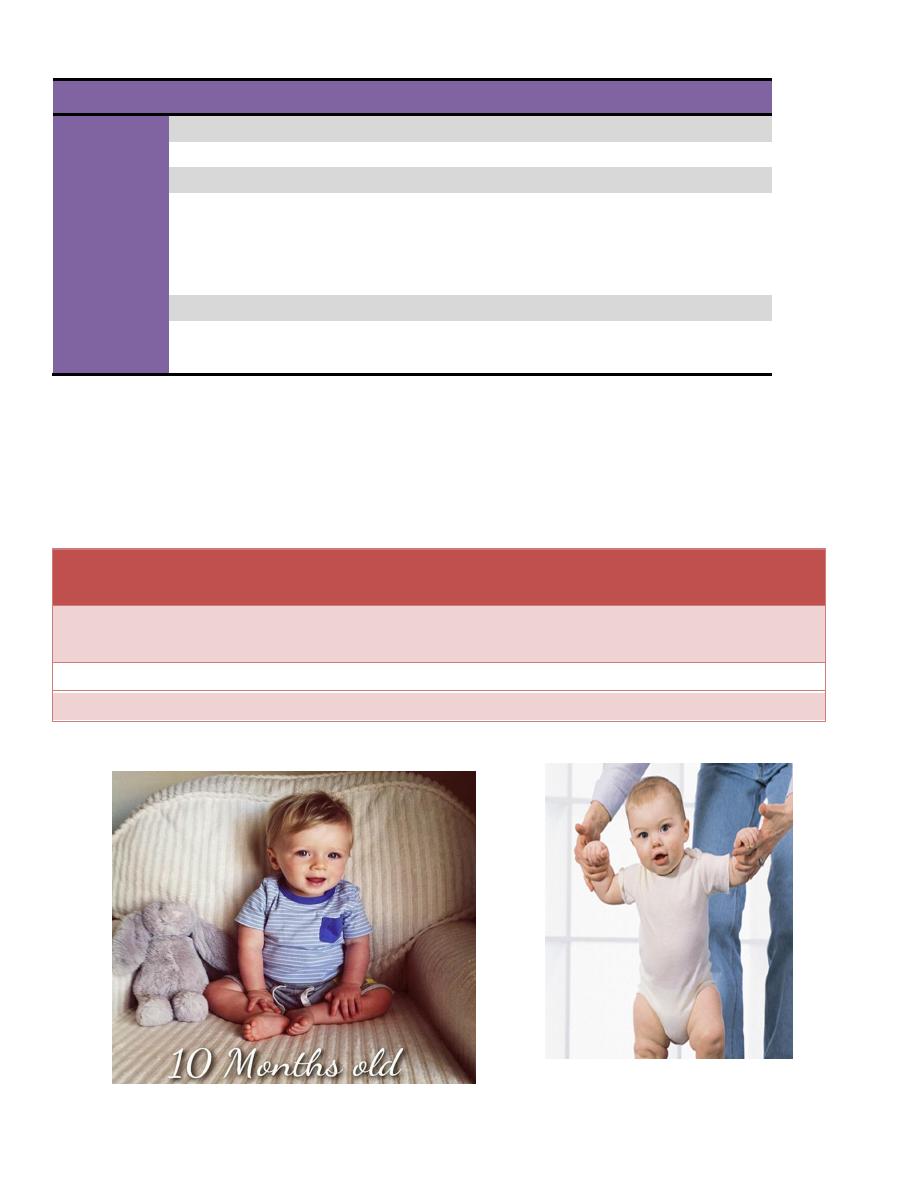
At 10 months
Sitting:
Sits up alone and indefinitely without support, with back straight
Standing:
Pulls to standing position; “cruises” or walks holding on to furniture
Motor:
Creeps or crawls
Adaptive:
Grasps objects with thumb and forefinger; pokes at things with
forefinger; picks up pellet with assisted pincer movement; uncovers
hidden toy; attempts to retrieve dropped object; releases object
grasped by other person
Language:
Repetitive consonant sounds (“mama,” “dada”)
Social:
Responds to sound of name; plays peek-a-boo or pat-a-cake; waves
bye-bye
At 12 months
Motor:
Walks with one hand held (48 wk); rises independently, takes
several steps
Adaptive: Picks up pellet with unassisted pincer movement of forefinger
and thumb; releases object to other person on request or gesture
Language: Says a few words besides “mama,” “dada”
Social:
Plays simple ball game; makes postural adjustment to dressing
12 months old infant
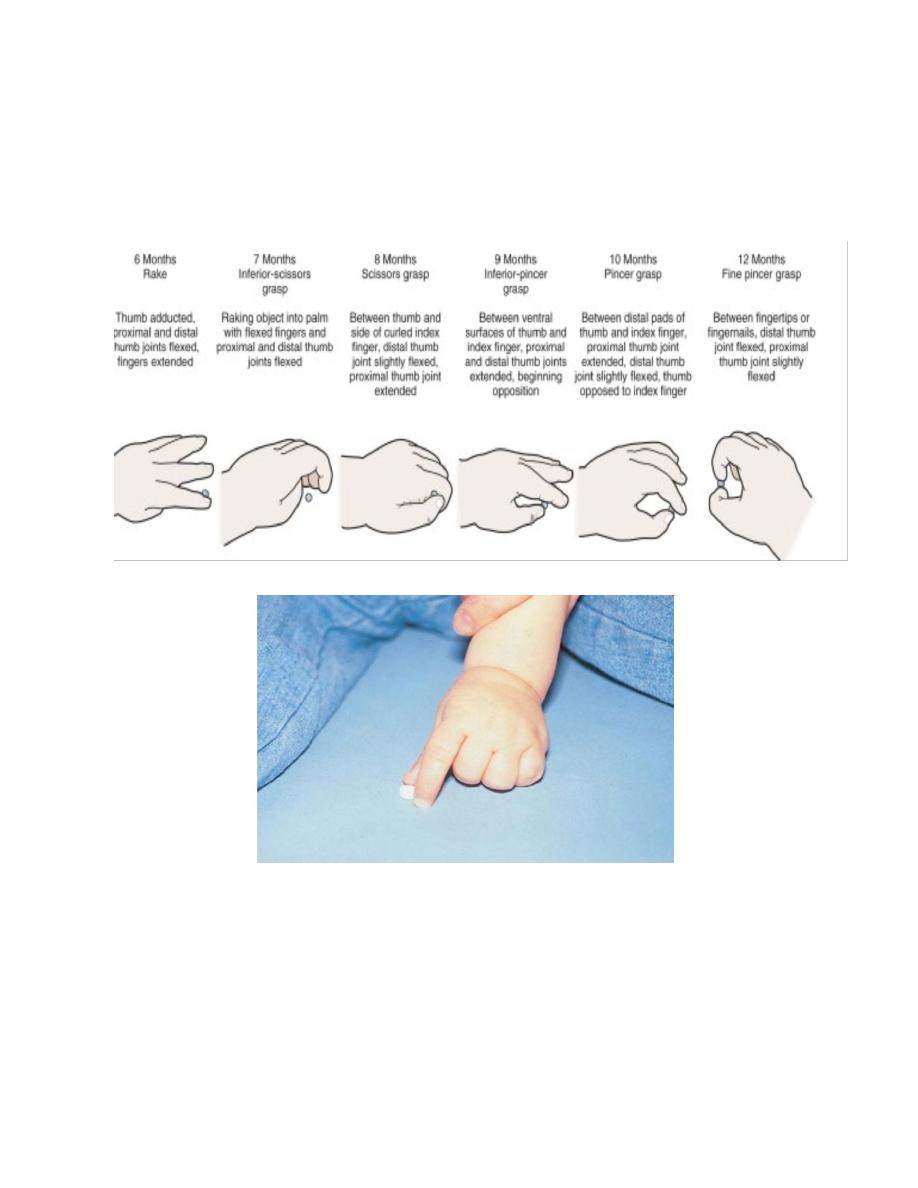
Mature Pincer grasp
